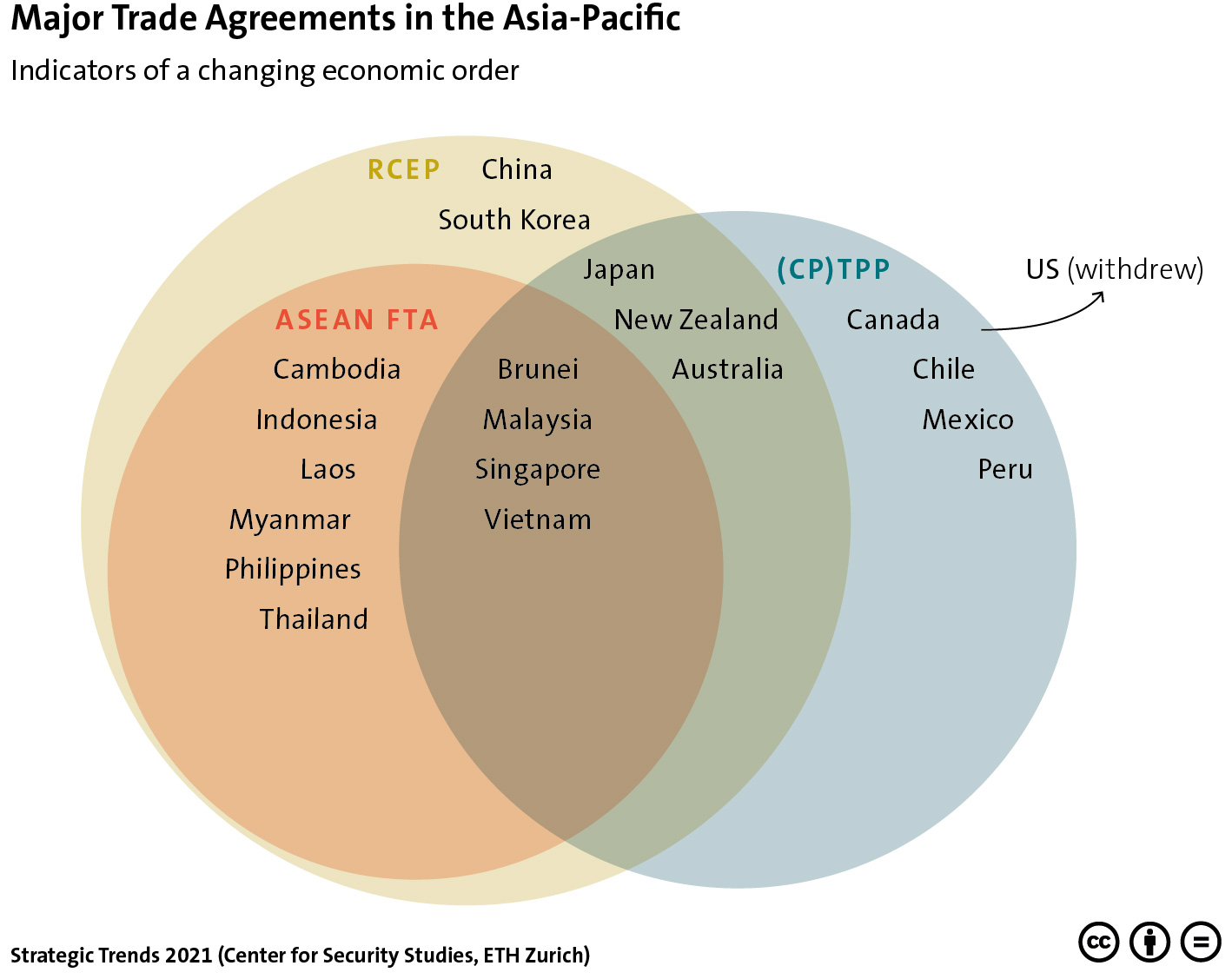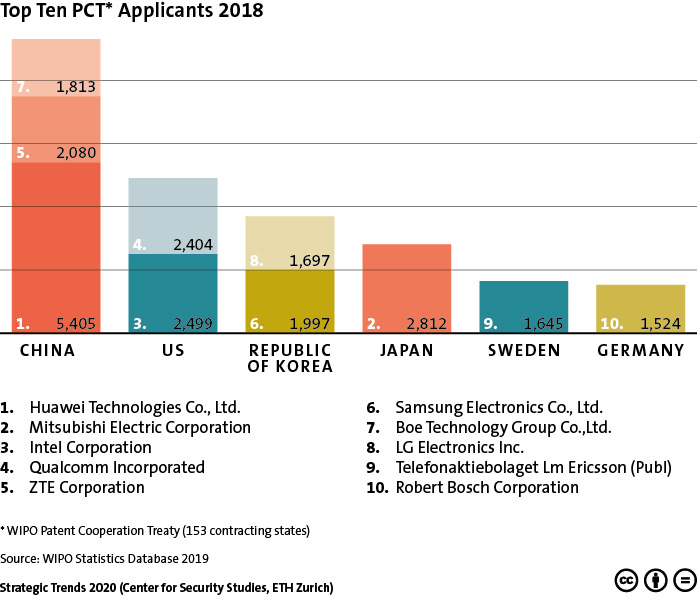
This week’s featured graphic illustrates major trade agreements in the Asia-Pacific. To find out more on Japanese and South Korean perspectives on changing power configurations in Asia, read Linda Maduz’ Strategic Trends 2021 chapter here.

This week’s featured graphic illustrates major trade agreements in the Asia-Pacific. To find out more on Japanese and South Korean perspectives on changing power configurations in Asia, read Linda Maduz’ Strategic Trends 2021 chapter here.

Strategic Trends 2021 offers a concise analysis of major developments in world affairs, with a focus on international security. It features chapters on China-Russia relations and transatlantic security, Franco-German-British security cooperation after Brexit, Turkey’s power projection in the Middle East and beyond, Europe and major-power shifts in the Middle East, and Japanese and South Korean perspectives on changing power configurations in Asia.
Image courtesy of Tech. Sgt. Brian Ferguson/DVIDS
This blog belongs to the CSS’ coronavirus blog series, which forms a part of the center’s analysis of the security policy implications of the coronavirus crisis. See the CSS special theme page on the coronavirus for more.
Various nuclear milestones in 2020 have provided important opportunities to raise awareness on the role of nuclear weapons in national security strategies, their impact on communities, the state of arms control treaties, and progress in nuclear disarmament. While the Nuclear Non-Proliferation Treaty Review Conference on its 50th anniversary was rescheduled due to the pandemic, the delay could enable member states to further engage in dialogue, seek compromises, and suggest new initiatives. Depending on when and how the conference will eventually take place, the coronavirus crisis might even bring much-needed change to conference proceedings.

This graphic illustrates the main applicants to the Patent Cooperation Treaty (PCT) in 2018 by countries and companies, such as Huawei, Mitsubishi, and Intel, among others.
For an insight into the implications of China’s Belt and Road Initiative (BRI) and targeted influence attempts in Europe, read Linda Maduz and Henrik Larsen’s Strategic Trends 2020 chapter here.

This article was originally published by the European Council on Foreign Relations (ECFR) on 14 July 2017.
For the EU, the EPA would demonstrate its ability to deliver concrete results despite the numerous crises it faces.
Last week the EU and Japan announced an ‘agreement in principle’ after four years of talks on an Economic Partnership Agreement (EPA) between the two economic giants. Yet the reaction to this news has not befitted a mega-trade agreement covering over 30% of world GDP and 40% of global trade. This is partly because news emanating from Washington dominates the headlines, but mostly because there is still a long way to go, with the two parties to the agreement bracing themselves for a set of difficult negotiations to finalize the deal.
The agreement in principle means that the chances of the deal falling through are slim, as long as talks are kept at the same level of political priority that made last week’s announcement possible. If agreed, the deal would mark a historic shift in the quality of economic and political relations between the two partners, with far-reaching consequences for third parties as well.